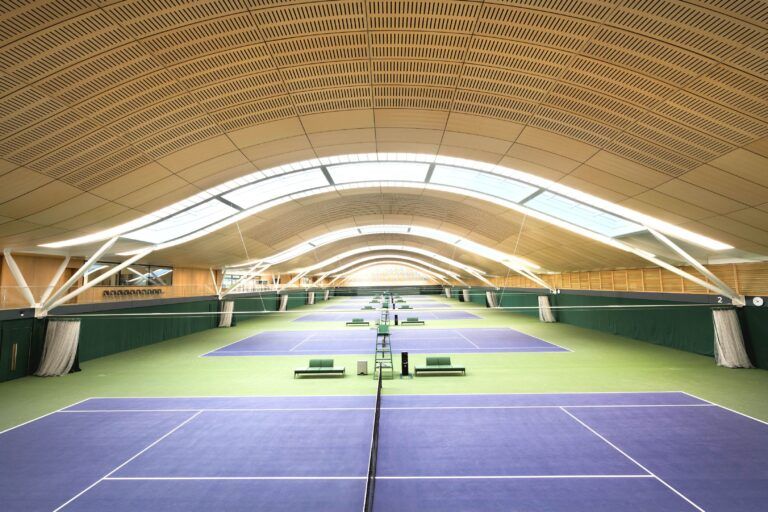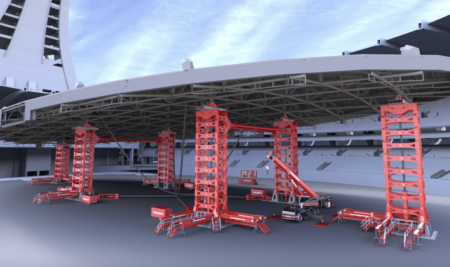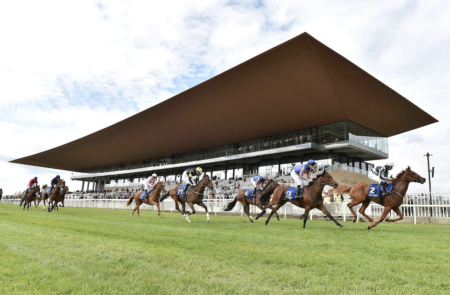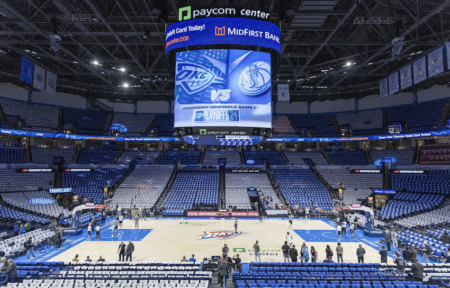A new facility has been created to provide The All England Lawn Tennis Club in Wimbledon with 12 new courts: six indoor and six outdoor clay courts; as well as new facilities for members and players competing in the annual Grand Slam tournament.
Designed by Hopkins Architects, the new courts replace the existing facilities opposite the main Wimbledon site. They have been constructed with a hybrid structure featuring a steel-framed, double-curving roof, which represents an early adoption of the new Flexicon sub-structure and fully formable XT panels developed by Kalzip.
These versatile new systems have the capacity to offer architects far greater freedom of expression in terms of roof geometry than conventional standing seam and other commercial roofing solutions. In fact, they make possible the use of roof geometry, which would previously have been confined to leadwork or PVC mouldings.
Kalzip can take the initial design from the architect or engineer as a Revit model and import/convert it into the industry standard Rhino surface modeller. The basic roof deck along with its supporting beams and purlins is then taken as the sub-structure upon which to design the tubular Flexicon 80/2.5 0mm members, which will in turn carry the different options of XT sheets.
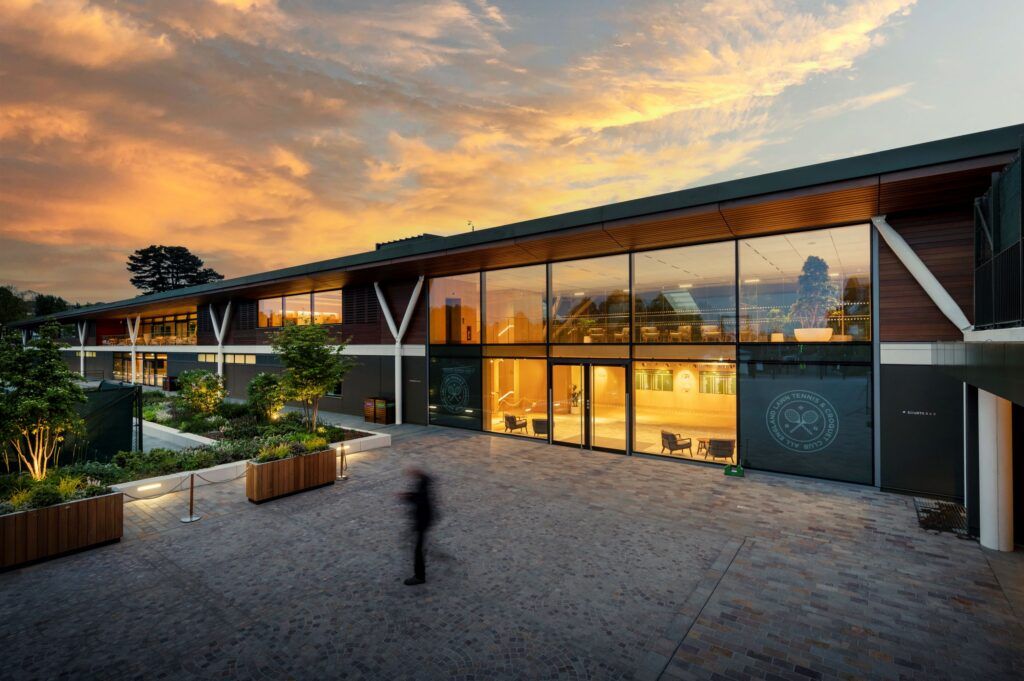
The particular challenges presented by the long, double-curving roof to Wimbledon’s indoor courts – aside from the complex geometry – were the need to roll all of the different sheet lengths and types on site, and the requirement to create a mock-up in the All England Club’s corporate colour and finish, which could be used as part of the process to gain planning approval.
Liaison with the project architects during the pre-contract period, based on their original aspirations regarding the tightness of the roof curves, resulted in some smoothing of the spherical shapes in order to respect the minimum radii which can be practically rolled on site by the manufacturer’s Portable Rollformers. Kalzip also carried out a value engineering process whereby the use of the more expensive XT profiles was confined to the dome-like centre section, thereby introducing lap joints, which then allowed the lower levels to be formed from standard profiles. The colour was a PVF2 finish in RAL 6007.
The Flexicon sub-structure creates an insulation zone that is nominally 225mm deep, though this varies due to the structural deck being faceted, and therefore not actually parallel to the XT and other capping sheets.
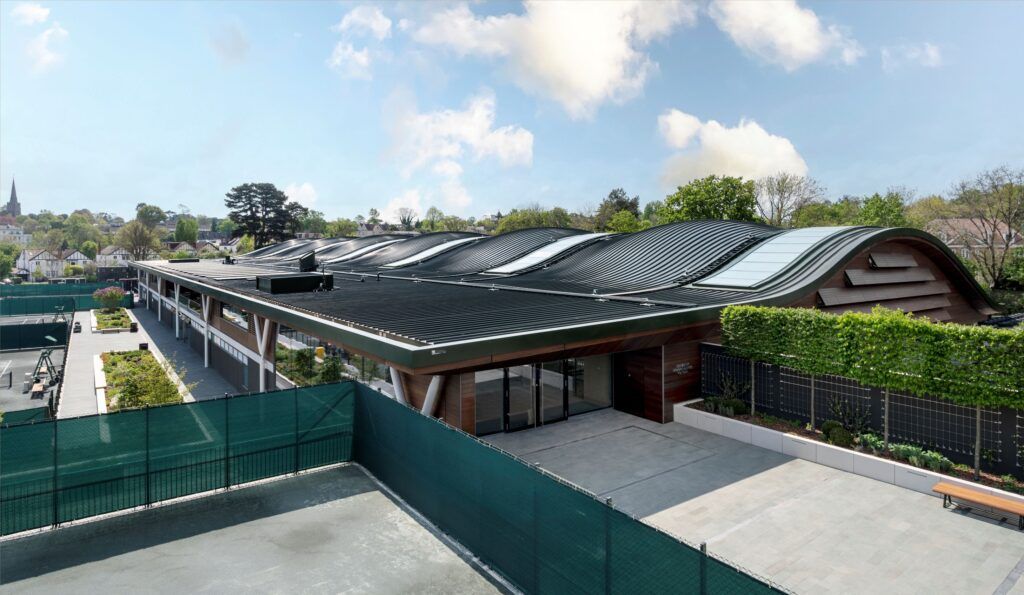
In all, the area of Kalzip roof totalled 5,500m2, including 2,400m2 of Kalzip 65 XT Smooth Curved sheets: with the remainder being 65/400 Straight, 65/400 Smooth Curved, and Kalzip 65 Taper Smooth Curved. All of these were produced in 1.0mm 3004/5 H46 aluminium. Additionally, Kalzip’s aluminium is made up of up to 96% recycled content, so it also contributes to more sustainable construction.
While traditional setting out techniques can be used, the contractor on the Wimbledon project involved a specialist surveyor who employed GPS equipment to mark out the precise coordinates of each bracket that secures the Flexicon members across the faceted structural deck; at the same time setting the height for the clips that retain the capping sheets. Using this approach, the installation can be completed with millimetre accuracy, maintaining the same tolerance as the actual manufacturing process for the capping sheets.
“This roof form could only have been achieved using XT and the new Flexicon support framework,” explained Alan Holcroft, senior CAD Designer at Kalzip. “Buildings are becoming increasingly complex and architects are seeking new solutions in order to realise their designs. The XT system definitely allows that geometry to be followed more closely and is a far more flexible alternative to conventional adjustable top-hats. It offers highly engineered design solutions with the calculations to back them up.”


